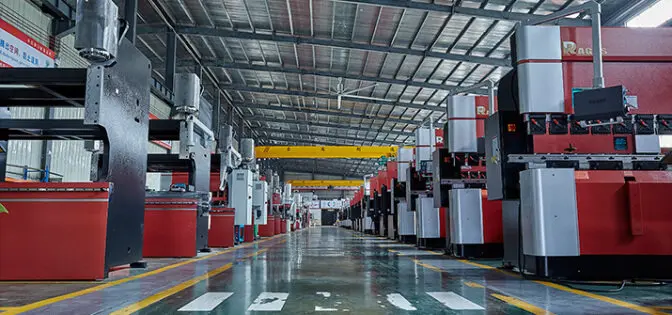회사 프로필
Anyang Younengde Electric Co., Ltd는 DC 플라즈마 용융 장비 , 고전력 DC 전원 공급 장치 및 고형 폐기물 / 위험한 폐기물 비 독성 처리 장비의 연구 개발, 설계, 제조, 설치 및 시운전을 전문으로하는 첨단 기업입니다. . 우리 회사는 DC 플라즈마 멜팅 장비 에 대한 35 개의 새로운 실용적인 기술 특허를 받았습니다 . 장비 용량은 50kva ~ 30000kva입니다. 원시 광석, 촉매 및 산업용 고형 폐기물에서 희귀하고 귀금속을 추출하고 풍부하게하는 과정은 높은 수율로 성숙합니다. 금속 실리콘 및 75 # 페로 실리콘의 수율은 실리카의 제련에서 높다. 비철 금속의 회복 속도는 폐기 회로 보드가 직접 녹을 때 높습니다. 칼슘 알루미 네이트 제련 과정은 성숙합니다. 우리 회사는 국내외의 많은 기업 및 유닛과의 전문 협력 및 기술 교류를 수행했으며 고품질 제품을 공급했습니다. 제품 사례 목록 중국 과학 아카데미의 역학 연구소 (기술 서비스 협력) Suzhou Institute of Design and Research (기술 서비스 협력) Anyang Longxin Silicon Industry Co., Ltd ( m etallic silicon powder remelting dc furnes) Hubei Boxin New Materials Technology Co., Ltd (금속 실리콘 제련 DC 용광로) Danjiangkou Huiyuan Hejin Co., Ltd (금속 실리콘 제련 DC 용광로) 베이징 센트럴 아이언 앤 스틸 리서치 연구소 ( 스틸 퍼니스) Dalian Wilte Steel Co., Ltd (Vanadium Titanium Iron 실험 DC 용광로) Henan Liyuan Group Co., Ltd (Ferroalloy Furnace) Wu'an Yuhua Steel Group Co., Ltd (스틸 알루미늄 합금 DC 용광로) Tangshan Ganglu Steel Group Co., Ltd (스틸 알루미늄 합금 DC 용광로) Heil Ongjiang Jianghui Huanbao Technology Co., Ltd ( Ferronickel 합금 DC 용광로) Guangdong Guangqing Jinshu Technology Co., Ltd ( Ferronickel 합금 DC 용광로) Henan Jiaozuo Mr. Zuo ( m ulti-function dc furnace) Rizhao Zhenghong Yanchuang New Materials Co., Ltd (Ferronickel 합금 DC 용광로) Fujian Anxi Ansheng Mining Co., Ltd ( m ulti-function dc furnace) liaoyangshi taizihequ boyi zhuzaochang (폐기물 아연 슬래그 dc 용광로) Chongqing Saiyadi Energy Technology Co., Ltd (Red Mud Ironmaking DC Furnace) Liaoning Fuyun 내화 Co., Ltd ( Calcium Aluminate DC Furnse) Huolinguole Gerun Huanbao Technology Co., Ltd (Calcium Aluminate DC Furnse ) Huolinguole Lifenglvye Co., Ltd (Calcium aluminate DC Furnse ) Dalian Yishun LVSE Technology Co., Ltd (Calcium Aluminate DC Furnse ) Danjiangkoushi Wanji 연마 재료 Co., Ltd (Corundum DC Furnace ) Jiangsu Nantong Taiyang Technology Co., Ltd (베릴륨 구리 합금 DC 용광로 ) Jiangsu Nantong Taiyang Technology Co., Ltd (베릴륨 구리 합금 DC 용광로 ) 인도네시아 PT Metalindo Makmur Mandiri (테스트 DC 용광로) Korea HF Metal Trade Co., Ltd (PCB DC Furnace) 광동 Meizhou Mr. Fu (PCB DC Furnace) Guizhou Yixiang Kuangye (그룹) Zhenyuan Runda Co., Ltd (귀금속 DC 용광로) Guangxi Zhongwu Kuangye Co., Ltd (귀금속 DC 용광로) Longyan Changyu New Material Technology Co., Ltd (귀금속 DC 용광로) Hubei Huanggang Mr. Zhao (귀금속 DC 용광로) Henan Yihui Jinshu Technology Co., Ltd ( 3 방향 촉매 제련 DC 용광로 ) Shanghai Yudun Xincailiao Technology Co., Ltd (3 방향 촉매 제련 DC 용광로 ) Zhejiang Qike Shengwu Technology Co., Ltd (3 방향 촉매 제련 DC 용광로 ) Zhejiang Metallurgical Research Institute (3 방향 촉매 제련 DC 용광로 ) Hubei Zhongyuan Chucheng Environmental Protection Technology Co., Ltd (3 방향 촉매 제련 DC 용광로 ) Huaian Zhongshun Environmental Protection Technology Co., Ltd (3 방향 촉매제 제련 DC 용광로 2 세트 ) M Inshan Huanneng Hi-Tech Gufen Co., Ltd (리드 아연 광석 테스트 DC 용광로) Zhejiang Teli Renewable Resources Co., Ltd (구리 슬러지 복구 DC 퍼니스) Keyuan Environmental Equipment Co., Ltd ( 유해 폐기물 처리 DC 용광로 ) Guanyinshan 폐기물 소각 스테이 Chaozhou Dongsheng Environmental Protection Technology Co., Ltd ( R Ock Wool DC Furnace) Yongxing ch ang long 환경 보호 기술 Co., Ltd (주석 슬래그 제련 및 재활용 DC 용광로) Kunming Dingbang Technology Co., Ltd ( 주석 제련 DC 용광로)











